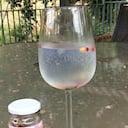What is this artform called?
The art of paper cutting dates back to the 6th century BC when the Chinese developed techniques for creating stencils for printing silk fabric. When trade began between the East and the West, this artform traveled to Europe in the 1600s because the term of "Chinese Shadow" was used to reference cuttings and later the term was changed to "silhouette" in France.
In Germany and Switzerland, farmers would pass time during long, cold winters using their knives and scissors to depict farm scenes and stylized motifs and paper that became known as scherenschnitte. Many of their works contained rotational symmetry and common themes included silhouttes, valentines, and love letters. Other cultures also have forms of paper cutting - Dutch: Paperknipkunst, France: Silhouette or decoupage, Germany, Switzerland and Austria: Scherenschnitte, Italy: Decoupage, Japan: Kirie, Mexico: Papel picado, and Polish: Wycinanki.
One of the most famous Swiss paper cutting artists was Jean-Jacque Hauswirth, 1809-1871, who created intricate, sensitive cuttings in black and white then later evolved into mixing colors to make complex, stunning pieces.
More Info:
bieler-beerli.com







